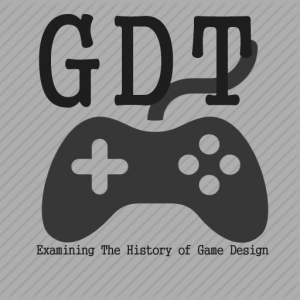Going Forward: The Next New Frontier In Video Game History
December 4, 2019 Stories, Plots, and Characters, Weekly Themes No CommentsHello and welcome to the final entry in Game Design Theory, and the overall history of video games. I hope you’ve enjoyed the journey thus far, but to quote an old and wise Dov, “even we who ride the currents of Time cannot see past Time’s end.” Before the end of this blog, however, I would like to take the time to talk about the possible future for the overall industry, and what routes different genres could or even will take in just a few months alone. And with that, I hope you enjoy.
Usually when we think about the realities of video games and their productions, the last thought had typically follows the why of a certain game’s creation. Put simply, we as observers only tend to admire the final product of a piece, a work, what have you. But the true, unbridled efforts of love, dedication, and admittedly seldom dread, lies within the process, the code. A simple team of just two people managed to accumulate, conceptualize, develop, and release the indie game Undertale in 2015. Less than two years later it became a catalyst for fan-made spin-offs, an unguessed trove of theories and speculation, an overwhelmingly adoring fan base, and eventually an official “sequel” three years later. However what the majority of casual attendees–by no one’s fault, mind you–fail to realize is the thirty two months and several push backs it took for these two people to develop and illustrate every asset needed. With all of this being said though, where does it tie in? How are the lessons from Toby Fox and Temmie Chang’s tribulations applicable to game design today?
It seems these days with most triple-A studios, the only process being reproduced is that of a formula. The trails and tribulations only come about from figuring out what aspects, features, and other assets will sell the most; not toward what aspects make the player feel the most. The difference between Undertale and any modern Call of Duty game in today’s light–aside from the drastic jump in graphical and realism quality–is that of the story. You see, anyone with the talent and patience to learn a program can eventually learn how to create their own game. Maybe someone does, and perhaps their launch sells more copies than anticipated. But maybe four months, five months, a few years down the line when that same wave comes back to crash the stores for a refund, it will already have been too late to recognize the fatal issue: the lack of a profound story.
Stories, my friends–at least the ones that keep you up weeks later demanding to know more–are what drives games forward; what pulls players back to fish out another bill from their wallets. Because the ability to tell a story, in my opinion, is one of the very few sources of real-life magic that we have left. To reel an audience in through words alone, to make them move with passion when the protagonist succeeds and jeer in fear when they don’t. To rip apart the heartstrings with an unexpected death only to mend them back together when an old friend resurfaces after years of being presumed dead. These are the things that stick with us as players, as gamers, as people, because for just a moment, we feel that we’re actually in the shoes of the protagonist (or any other character the reader relates to). At the end of the day, it won’t matter if a company dedicated fifty people to make sure the blood splatters in the exact correct way if the character its spurting out of is only seen as a collection of pixels, or just another mindless NPC for the player to run through.
It is very possible that the most powerful companies within this industry will disregard the public’s cries and pleads, and continue to churn out formulaic yet empty titles. It’s very possible that tiles like Fallout 76 and No Man’s Sky have already begun to usher in a new generational crash like the Extra Terrestrial did back in 1982. And because of this, it’s very possible that the Virtual Reality niche may be the last, final gasp of life for this machine, as it then begins to fade into obscurity; only to be remembered for the next punchline. However, it is also possible that the aforementioned failures serve as a spark to the powder keg, so to speak. The last straw a community picks before it decides it’s had enough, and takes to the streets. Who knows? We may see an overwhelming boom and surge for a new generation of video game development. That’s the uncertainty in life. As terrifying and unknown as it is, it can also be beautiful and full of potential if we just find the right perspective to view it in. As long as we keep telling stories, eventually there will be something substantial enough to write a game about it. Art imitates life, and life imitates art because the two are one in the same.
I really hope you enjoyed today’s entry into the history of game design, and the blog as a whole. It was an enlightening experience going back through history with you, and I’m privileged to have been given the chance to do so, and to have experienced it with you. Thank you from the bottom of my heart, and as always,
Cheers.
Ethan

